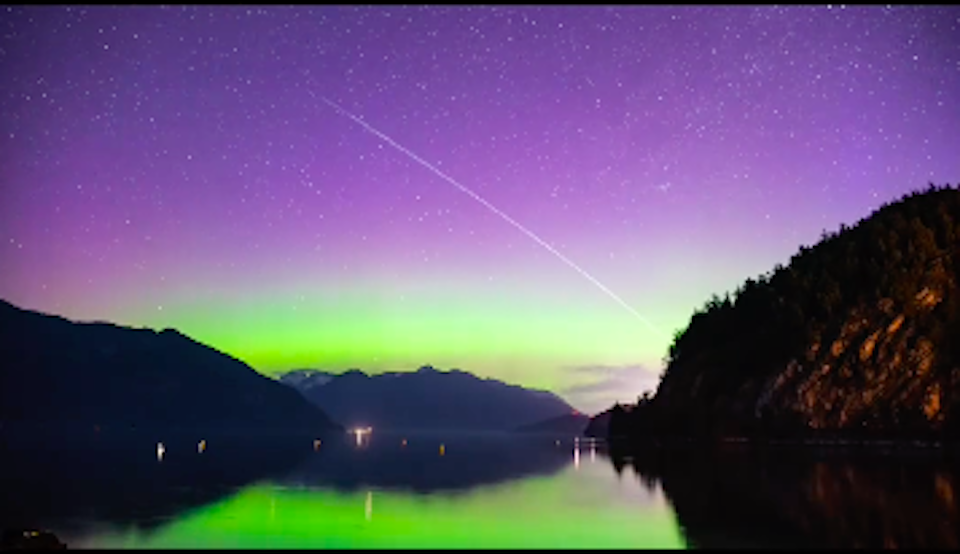Northern lights might dance in Metro Vancouver skies this week, although longer days won't provide as much time to view the celestial display.
While it is less likely to observe the aurora borealis in the late spring and early summer, locals captured stunning images and time-lapses of the northern lights in the Lower Mainland on May 19.
The National Oceanic and Atmospheric Administration (NOAA)'s Space Weather Prediction Center observed a coronal mass ejection (CME) on Tuesday, July 4, and says it will likely impact Earth on Friday.
The centre calls for G1 (Minor) geomagnetic storm, "with a chance for G2 storm levels if more favourable conditions are observed."
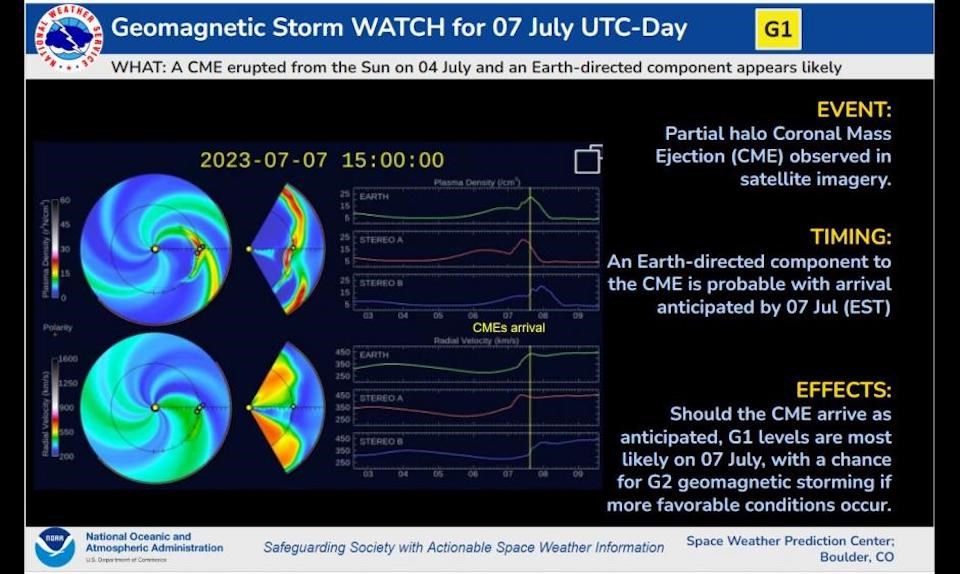
The University of Alaska Fairbanks (UAF) expects that the stormy space weather will result in "high" auroral activity, with displays possible overhead from "Inuvik, Yellowknife, Rankin and Iqaluit to Juneau, Edmonton, Winnipeg, Thunder Bay and Sept-Iles, and visible low on the horizon from Seattle, Des Moines, Chicago, Cleveland, Boston, and Halifax.'
The university's online aurora monitor map shows what regions the aurora's green glow will likely reach, as well as other areas where there is less of a possibility. Additionally, there is a brief description below the map of the aurora activity on that particular day. You can switch to other days to see the forecast, too.
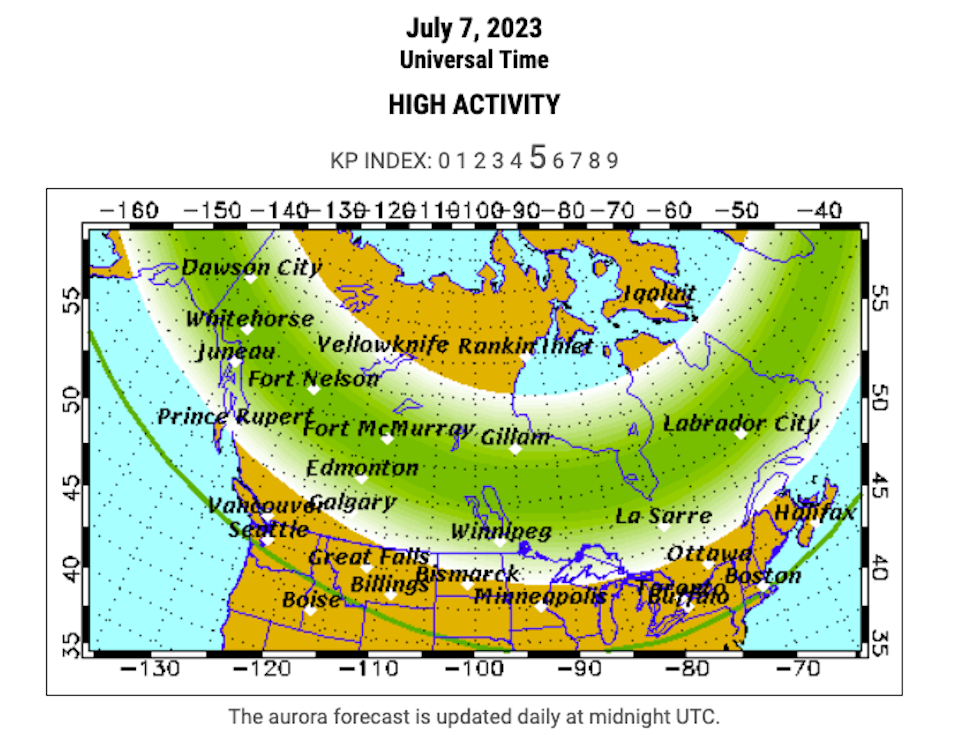
Northern Lights viewing in the Metro Vancouver weather forecast
Environment Canada is calling for a string of bluebird days this week, which bodes favourably for sky-watchers eager to observe the aurora's haunting green glow locally.
While the aurora's reach isn't expected to extend as far south on Saturday and Sunday, the UAF's forecast notes that viewing may be possible "low on the horizon from Vancouver, Great Falls, Pierre, Madison, Lansing, Ottawa, Portland and St. Johns."
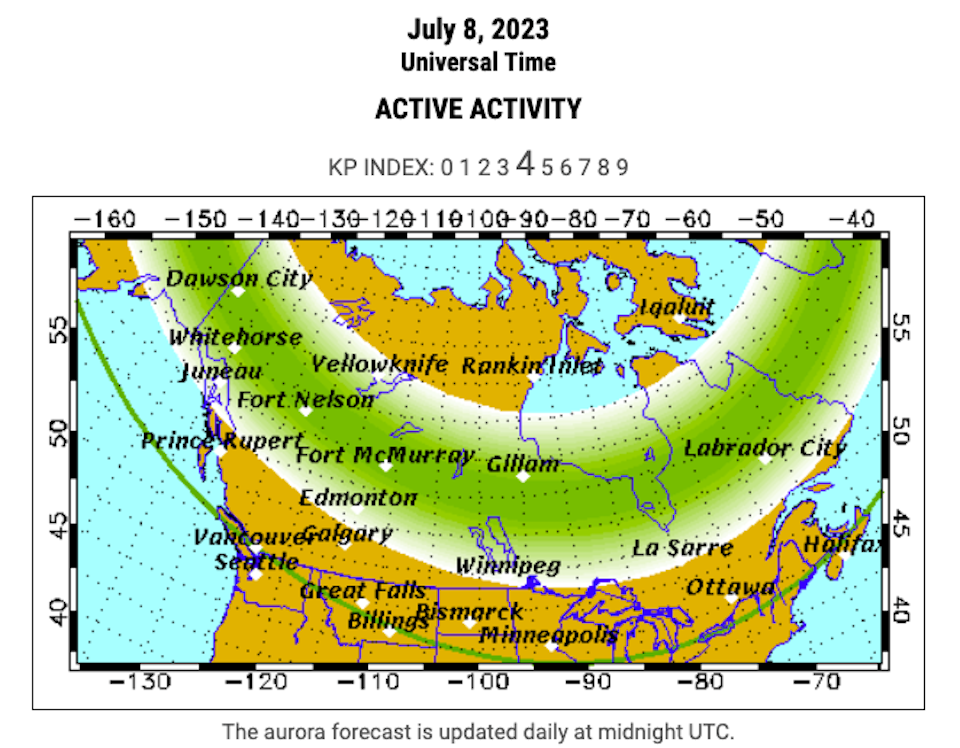
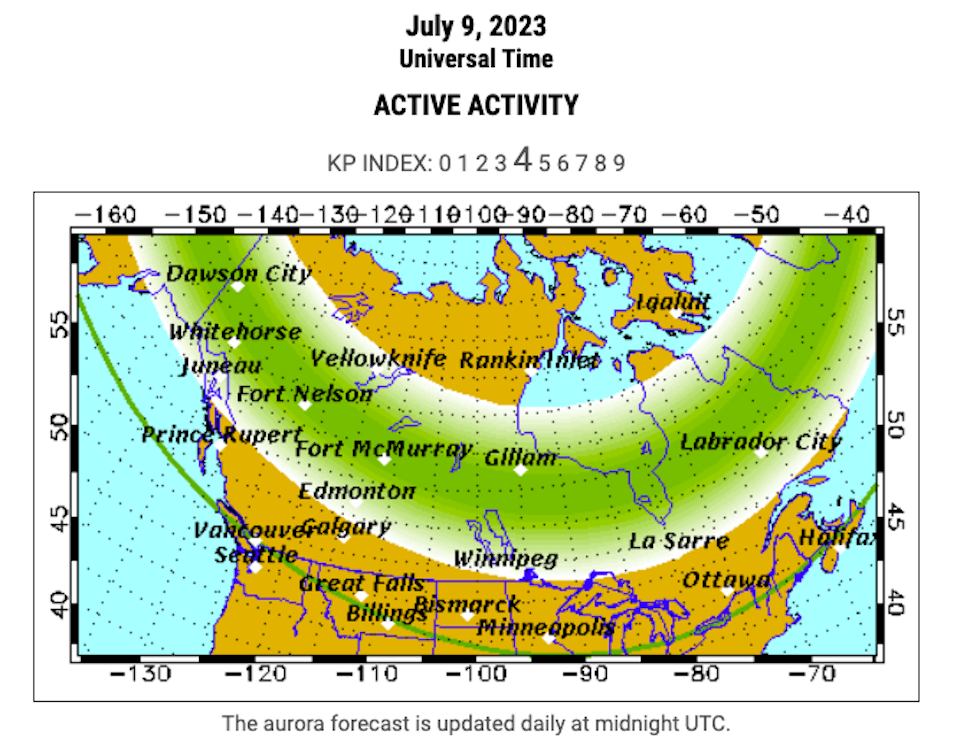
Light pollution in large cities makes the aurora borealis difficult to observe, but not impossible, given the right circumstances. But your best bet for viewing that hypnotic green glow is up north or outside of the city.
Of course, when you do spot the northern lights, they likely won't appear green or any other colour. Instead, you'll see the arcing, milky manifestation moving in the sky. In order to capture that green glow, you'll need to use a camera with a longer exposure.
Find out more northern lights information and viewing tips with our comprehensive guide.
